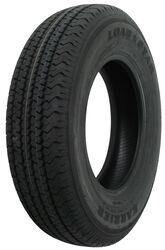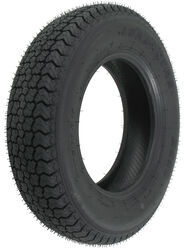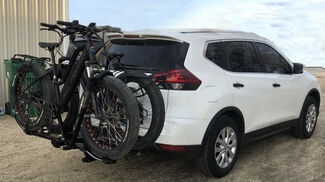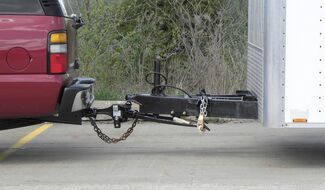
How to Determine the Right Air Pressure to Fill a Trailer Tire
Question:
Hello, i just bought a pop up camper and ive been going crazy trying to find out how much air pressure i should fill the tires too, everybody tells me that i should fill them out to 35 psi but the tire says max 60 psi. the tire also says that its load rate is 1,360 lbs and according to my calculations that comes out to 2,720 lbs but the weight of the trailer without weight is 2200 lbs and i could add an extra 700 lbs, that comes out to 2900 lbs. that exceeds the both tires together? so i was thinking that i should buy a bigger tire, a whopping 14inch tire. i feel so lost. i just want to be able to feel safe pulling the trailer and not put my family in any danger weaving threw mountain grades. what would be the proper psi for the tire? and should that be with the weight of the trailer on the tire or with the tire off the ground or off the trailer ? should i put a bigger tire? size ST205/75R14, i wonder if they would fit?
asked by: Eli
Helpful Expert Reply:
I can end this debate for you real fast! Trailer tires, which will have an ST in front of the size, should always be inflated to the maximum psi indicated on the tire. Trailer tires usually do not have a recommended and maximum psi indication so I am curious if the tries on the camper are ST tires or regular passenger vehicle tires. On a regular trailer tire you would inflate it to the max psi indicated on the tire because trailer tires are built with a thicker sidewall to handle more vertical load.
If a trailer tire is under inflated, because of the thicker sidewall it will generate excessive heat and that is what leads to failure.
Check the camper frame and there should be a sticker or plate that lists what tire size should be on the trailer. It could also be in the owners literature. That is the size you will want to stick with.
Any given size tire can have different load ranges. For example an ST175/80-13 load range B will have a capacity of 1,100 pounds at 35 psi. But a load range D in the same size, # AM10210, is rated for 1,610 pounds at 65 psi. So you do not need a larger size, you just need a higher load range.
The wheel also has to be rated high enough. Tires and wheels are not always rated the same. There should be a sticker on the back of the steel or possibly stamped into the metal and indicates the wheel capacity and psi rating.
If you are not sure then the safe bet is to replace the tires and wheels. To do that I would need to know the bolt pattern of the wheel. I have linked a help article that shows how to measure for bolt pattern. I have also included a link to our informational article on trailer tires for you.

Products Referenced in This Question
Karrier ST175/80R13 Radial Trailer Tire - Load Range D
- Trailer Tires and Wheels
- Tire Only
- Radial Tire
- Load Range D
- 175/80-13
- 13 Inch
- M - 81 mph
- Kenda
more information >
Product Page this Question was Asked From
Loadstar ST175/80D13 Bias Trailer Tire - Load Range D
- Trailer Tires and Wheels
- Tire Only
- Bias Ply Tire
- Load Range D
- 175/80-13
- 13 Inch
- M - 81 mph
- Kenda
more information >
Featured Help Information
Miscellaneous Media

Continue Researching
- Q&A: What Air Pressure Should I Run in My Trailer Tires?
- Q&A: Should Trailer Tires Always be Inflated to Their Max PSI
- Search Results: 25mm hub
- Q&A: What psi Should Trailer Tires be Inflated To
- Shop: LED Light Kit w/ Switch for Solera RV Awnings with Prepflex Fabric - Up to 15' Wide
- Shop: Kenda Karrier ST205/75R15 Radial Trailer Tire with 15" Black Mod Wheel - 5 on 4-1/2 - LR D
- Shop: Suspension Enhancement
- Shop: Solera Smart Arm 12V Power RV Awning - 18' Wide - Programmable - Black Fade
- Shop: Trailer Hitch
- Shop: Dexter Idler Trailer Axle w/ Hubs - EZ-Lube - 5 on 4-1/2 Bolt Pattern - 60" Long - 2,200 lbs
- Shop: Solera Awning Rail Extrusion - Black - 8' Long
- Video: etrailer Round A-Frame Trailer Jack Review
- Article: 7 Common Questions Everyone Has About Trailer Tires
- Shop: Trailer Wiring
- Video: Review of RV Safe RV Gas Detectors - Carbon Monoxide and Propane - RS54FR
- Search Results: awning
- Search Results: lc715217
- Article: Trailer Tire Sizing
- Shop: Taskmaster 4.80R12 Radial Trailer Tire - Load Range C
- Q&A: Lug Nut Torque Chart for Trailer Wheels
- Shop: Towing Mirrors
- Video: Review of Air Lift Vehicle Suspension - LoadLifter 5000 Air Springs Rear Axle - AL49DQ
- Shop: Kenda Karrier ST205/75R14 Radial Trailer Tire with 14" Black Mod Wheel - 5 on 4-1/2 - LR C
- Video: Review of Lippert Replacement LED Light Strip Solera RV Awning - LC423331
- Shop: RV Camera
- Search Results: spare tire carrier
- Search Results: 225/75r15
- Shop: Brake Controller
- Search Results: step light
- Search Results: lc715123



































Michael S.
9/4/2020
I have a 2018 Thor Windsport 34J. The sticker in the RV says to inflate tires to 90 PSI but the tires say 110 PSI. Which one is correct?